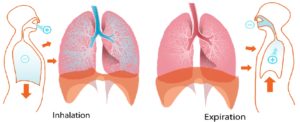This issue of Making a Difference! is brought to you by…
Life by Design
Judy Carlson
(712) 251-5715
Send Us An Email
Go Shopping!
In this issue…
♦ Breathe out… breathe in… ♦ Lungs do more than breathe…
♦ Anatomy of the lungs… ♦ How pneumonia develops…
♦ Supplements for lung health… ♦ Does your home need a detox?
♦ Natural alternatives to harmful chemicals
♦ What’s in your skin care products? ♦ Isn’t it time?
 “We are all constantly fighting a battle against disease, whether we realize it or not. It is the most important battle you have ever been in. Determine… NOW… to nourish your body properly and increase your strength and vitality, to raise your resistance against disease and prevent weakened cells from strangling the expression of your Life Force… which is HEALTH.”
“We are all constantly fighting a battle against disease, whether we realize it or not. It is the most important battle you have ever been in. Determine… NOW… to nourish your body properly and increase your strength and vitality, to raise your resistance against disease and prevent weakened cells from strangling the expression of your Life Force… which is HEALTH.”
~ Dr. Forrest C. Shaklee, Sr.
Breathe out… breathe in…
If we’ve learned anything from the past year and a half, it’s how important it is to keep our immune system strong and healthy. And a major component of our immunity is our respiratory system. Why?
Many people who become ill from a viral or bacterial infection actually succumb not directly from the infection, but from pneumonia, partially because their lungs are weak.
Your lungs are an integral part of your body’s regular functions. They’re involved in your respiratory system, which allows you to breathe.
Breathing supplies your body with the oxygen it needs to function, so it’s esp ecially important to make sure your lungs are working properly, and to seek medical treatment if they aren’t. Lung disease can prevent your lungs from doing their job efficiently, which means organs like your heart and brain aren’t getting enough oxygen.
ecially important to make sure your lungs are working properly, and to seek medical treatment if they aren’t. Lung disease can prevent your lungs from doing their job efficiently, which means organs like your heart and brain aren’t getting enough oxygen.
In this newsletter, you’ll learn about the anatomy and function of your lungs to get a better understanding of the role this pair of organs plays in your overall health and to help you lower your risk of lung disease.
Lungs do more than breathe…
While re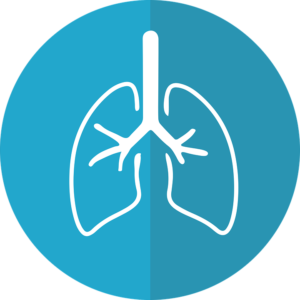 spiration… which provides blood cells with oxygen and expels carbon dioxide… is the most obvious function of your lungs, they also serve many other regulatory and protective functions.
spiration… which provides blood cells with oxygen and expels carbon dioxide… is the most obvious function of your lungs, they also serve many other regulatory and protective functions.
Your lungs help balance your body’s pH levels by reducing acidity caused by carbon dioxide buildup.
Your lung membranes secrete immuno-globulin A, an antibody, which protects against airborne viruses and bacteria, while mucus traps and removes bacteria and dust particles.
Anatomy of the lungs…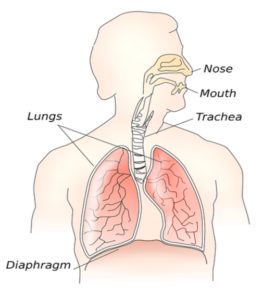
Your lungs are a pair of organs located in your chest cavity. Your left lung is a little smaller than the right, and it has an indent called the cardiac impression that makes room for your heart. The close proximity of your heart and lungs allows for the oxygenation of blood, which then passes back into the heart.
Each lung is encased in a pleural sac, and the different sections of your lungs are divided into lobes. The most important structures to know to better understand respiration are the bronchi and the alveoli.
Bronchi
The bronchi carry air from the trachea into the lungs. They branch off into smaller tubes known as bronchioles.
Bronchi are mainly a method for the transportation of air to and from your lungs, but they also serve an important immune function. Most lung conditions that interfere with regular breathing, such as asthma and lung cancer, interfere with the regular function of the bronchi.
Alveoli
Your alveoli are small air sacs inside your lungs. These are the structures responsible for intaking oxygen and expelling carbon dioxide, allowing for gas exchange.
Keeping these critical structures healthy will enable your lungs to fight off invading pathogens and keep you breathing comfortably for life!
How pneumonia develops…
When bacteria, viruses, or fungi come in contact with your lungs, they can create an infection 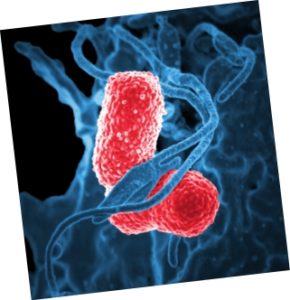 known as pneumonia, a lung disease that affects millions of people per year. There are many types of pneumonia, including one caused by the COVID-19 virus.
known as pneumonia, a lung disease that affects millions of people per year. There are many types of pneumonia, including one caused by the COVID-19 virus.
Pneumonia is a disease that causes inflammation in the air sacs or alveoli in your lungs that are responsible for respiration.
Pneumonia causes the alveoli to fill with pirulence and fluid, which interferes with their ability to take in oxygen and transfer it to your bloodstream. Without oxygen, your body’s cells are unable to function properly.
In addition to difficulty breathing, pneumonia’s common symptoms include coughing, chills, and fever. Some cases of pneumonia can also cause fatigue, confusion, chest pain, or shock. If you’re experiencing any of these symptoms, especially shortness of breath while at rest, see your doctor.
Viral pneumonia is caused by a virus such as COVID-19 entering and infecting your lungs.
Viruses may be airborne and live on surfaces, so it’s important to follow proper health procedures to minimize your risk. Keep your distance from sick people, wash your hands with Get Clean Moisturizing Hand Sanitizer and wipe down surfaces with Basic-G+ regularly.
Supplements for lung health…
When it comes to nutrition, we rarely talk about “feeding our lungs”. The fact is, just like other body systems, our lungs need specific nutrients to perform optimally and to combat air pollution, airborne allergies, and respiratory diseases.
____ Vitamin D. Recent research shows that vitamin D helps reduce excessive inflammation in the lungs while still supporting the body’s ability to fight viral infection. For maximum protection, take Vita-D3.
____ Vitamin A. A deficiency can lead to an excessive reaction to oxidative stress in the lungs, 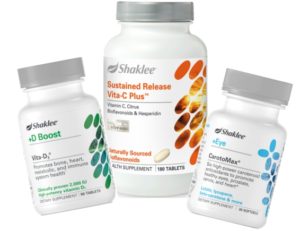 causing bronchial spasm and more severe asthma. Low levels of vitamin A prevent proper tissue repair and may lead to the formation of scar tissue in the lungs. For optimum levels of vitamin A in the form of its precursor, beta carotene, try CarotoMax.
causing bronchial spasm and more severe asthma. Low levels of vitamin A prevent proper tissue repair and may lead to the formation of scar tissue in the lungs. For optimum levels of vitamin A in the form of its precursor, beta carotene, try CarotoMax.
____ Vitamin C. Vitamin C reduces the activity of bacteria during an infection, increases interferon levels, stimulates the activity of killer T cells as well as antibody production, and is essential for the production of collagen, the connective tissue that makes up a lot of lung tissue. Sustained Release Vita-C or Chewable Vita-C will keep your levels up.
Other supplements that can help keep your lungs healthy are:
____ OmegaGuard
____ Vita-E Complex
____ FlavoMax
____ OsteoMatrix
____ VitalMag
Does your home need a detox?
Did you know there could be a lot of harmful toxins lurking in the home? From flooring to paint and medications to cleaning products; we are surrounded by toxins every single day.
While a low level of toxins isn’t harmful to the body, too much of them could cause serious health issues.
Harmful to children
 While harmful chemicals impact everyone in the household, kids are known to be particularly susceptible to exposure. Young children crawl across the floor, place things in their mouths and breathe more air than adults. Their bodies are still developing and their immune systems aren’t yet as strong as an adult’s.
While harmful chemicals impact everyone in the household, kids are known to be particularly susceptible to exposure. Young children crawl across the floor, place things in their mouths and breathe more air than adults. Their bodies are still developing and their immune systems aren’t yet as strong as an adult’s.
Increases the risk of lung diseases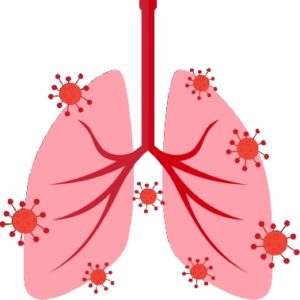
Harmful chemicals can have a deleterious effect on the respiratory system, including asthma and lung disease.
The main chemicals that affect the respiratory system include cadmium (found in old batteries), benzene (degreasers) and asbestos (old insulation).
Impacts the renal system
The renal system is responsible for eliminating waste, regulating body fluids and salt levels. Harmful chemicals can cause kidney tissue damage, kidney cancer and limit the ability of the renal system to filter blood.
Chemicals that impact the renal system include lead (outdated plumbing and old paint), mercury (thermostats and fish) and chlorinated hydrocarbon solvents (dry cleaning solutions, degreasers and paint removers).
Dangerous for cardiovascular health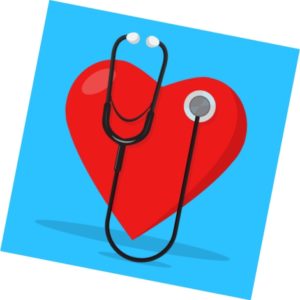
Used to move gases, nutrients and waste to and from the body, fight disease and stabilize your temperature, the cardiovascular system is crucial to our health.
The main chemicals that put the cardiovascular system at risk include nitrates (fertilizers), methylene chloride (paint removers and auto part cleaners) and carbon monoxide (faulty furnaces and car exhausts).
Reproductive issues
High levels of harmful chemicals can also cause problems with reproduction. You may find it more difficult to conceive, it can increase the risk of your baby dying, and cause potential birth defects. In some cases, it can even cause infertility.
The chemicals putting you at risk of reproductive issues include methyl mercury (fish and coal burning).
Certain chemicals can also affect the nervous system (especially eyesight, memory and speech). the immune system, and they can also cause rashes and dermatitis.
While you can’t eliminate all chemicals completely, it is possible to reduce the amount in the home to improve your health.
One thing you can do is to make sure your home is well ventilated to keep hazardous chemical vapors moving through and out of your home.
Also, since many chemicals enter our bodies through drinking water, be sure to filter it through a Get Clean Water Pitcher first.
Natural alternatives to harmful chemicals
As harmful chemicals are typically found in everything from our food to our cleaning products, it’s easy to think they are unavoidable. However, did you know there are some great natural alternatives you can use?
Stainless steel cookware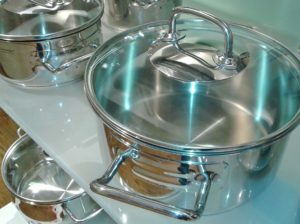
Most homes take advantage of the convenience of non-stick cookware. However, did you know it can give off toxic gases when heated to high temperatures? Instead, use stainless steel cookware.
Use glass bottles
Plastic water bottles can contain numerous harmful chemicals such as BPA. These can leak through into the water, then absorb into the body when you drink from them. Switching to reusable glass bottles is better for the environment too.
Switch to Get Clean!
Cleaning products are a huge source of harmful chemicals. The fumes released from cleaning products can lead to respiratory issues and they are also extremely dangerous for children. However, you now have a healthy, economical alternative… Get Clean from Shaklee!
Try fresh flowers
 If you like to keep the home smelling fresh, it’s common to use cans of air freshener. However, these too contain harmful toxins which can build up in the home.
If you like to keep the home smelling fresh, it’s common to use cans of air freshener. However, these too contain harmful toxins which can build up in the home.
Instead of using air freshener, fresh flowers are a great option. Not only do they smell divine, but they also brighten up the home.
What’s in your skin care products?
Most of us are very conscious about using healthy ingredients in our food. But what about the products we put on our skin? We don’t always think about the ingredients in our lotions, cleansers, and moisturizers, but what we use on our body is just as important as what we put into it.
From the outside in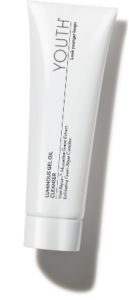
Most of what you put on your skin is absorbed into your body. Any harmful ingredients in skin care products can damage your skin and could even deliver toxins into your bloodstream. For example, some cleansers contain petroleum and paraffins that contain toxins and can clog pores. A safer alternative would be Shaklee’s Luminous Gel Oil Cleanser. Its exfoliating green algae and avocado oil calms and hydrates skin.
Clean beauty
A clean beauty product is anything that doesn’t contain harmful ingredients like parabens, phthalates, PEG derivatives, and artificial colors and fragrances. Clean beauty contains 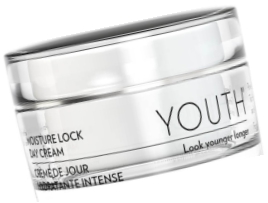 ingredients that are naturally derived. Radiance C+E, for example, uses vitamin C and E and raspberry cell extract to visibly reduce the appearance of fine lines and wrinkles. Moisture Lock Day Cream and Moisture Activating Serum are made with cactus extract, muscadine grape, Lotus Japonicus, and Schisandra Chinensis.
ingredients that are naturally derived. Radiance C+E, for example, uses vitamin C and E and raspberry cell extract to visibly reduce the appearance of fine lines and wrinkles. Moisture Lock Day Cream and Moisture Activating Serum are made with cactus extract, muscadine grape, Lotus Japonicus, and Schisandra Chinensis.
Yes… clean beauty prioritizes not only the look but also the health of your skin.
Isn’t it time? 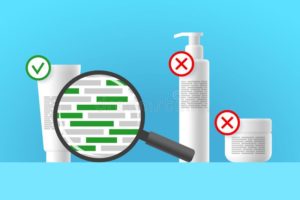
If you haven’t looked at your skin care product labels, it may be time to “clean it up” with products that use safe ingredients. If you need some ideas, our entire YOUTH line is FREE of over 2,500 harmful chemicals and questionable ingredients commonly found in skin care products! And remember… skin care ingredients matter because your health is a top priority!

